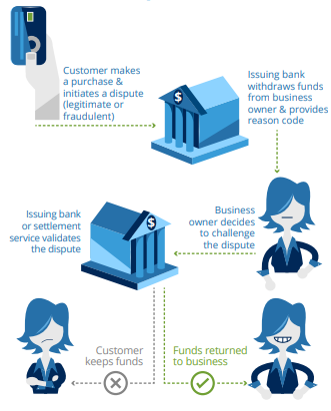Please update your browser.
What is a Dispute (Chargeback)
A chargeback occurs during the dispute process when a cardholder disputes charge, fraudulent activity is suspected, or a payment didn’t comply with the rules and regulations established by a payment brand, such as Visa®, MasterCard® or debit network. The chargeback event describes the actual reversal of funds during the dispute process.
How does a dispute get generated?
1. The cardholder contacts their issuer (the bank that stands behind the card), explains the problem and asks for their money back.
2. The issuer researches the accuracy of the claim.
- If the claim is considered unreasonable, then the cardholder is responsible for the payment and the settlement funds are not impacted.
- If the cardholder appears to have a reasonable claim, the issuer begins the dispute process
3. During the dispute process
- The issuer credits the cardholder, the payment brand sends funds back to the card issuer and then Chase, in turn, debits the funds from your settlement account to cover the dispute and notifies the payment brand (e.g., Visa®, Mastercard® or the debit network).
- Chase will send documentation about the disputed charge, which requires a timely response. You can see your disputes by signing into Chase.com/business.
Disputes are something every business wants to avoid, as they can result in lost revenue.
- Fees related to each dispute can range between $25 to $100 per transaction, and they increase based on a business’s volume of disputes.
- It’s estimated that up to 42% of businesses challenge less than half of all disputes and 14% never bother to fight them at all. [2. Chargebacks911, June 5, 2018]
